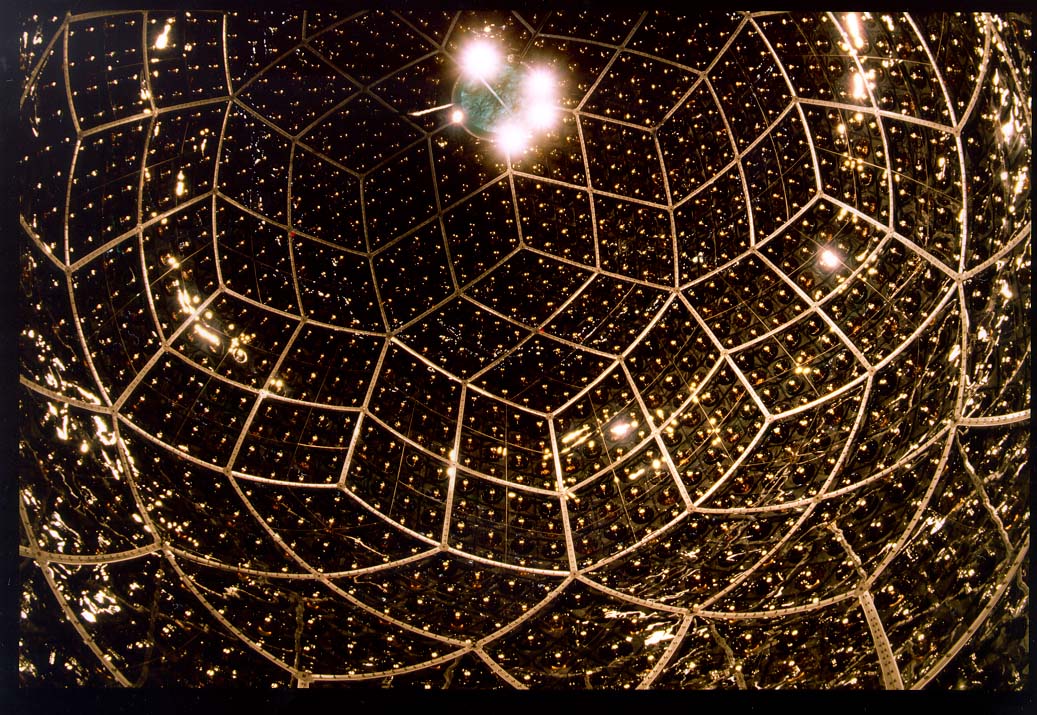KamLAND

KamLAND (Kamioka Liquid Scintillator Antineutrino Detector) is an electron antineutrino detector at the Kamioka Observatory, an underground neutrino detection facility located in the Japanese Alps, near the border of Gifu and Toyama prefectures. This project is conducted by the Research Center for Neutrino Science, Tohoku University, and involves numerous universities and institutes from around the world.
Goals of Physics
Reactor Neutrinos
At the heart of the detector is approximately 1 kiloton of liquid scintillator (LS), a highly sensitive medium capable of detecting faint signals from antineutrino interactions. KamLAND was originally designed to detect antineutrinos emitted from nuclear reactors located hundreds of kilometers away, providing groundbreaking confirmation of neutrino oscillations and thus evidence for neutrino mass.
Geoneutrinos: First-Ever Detection in the World
In addition to reactor antineutrinos, KamLAND has also made pioneering contributions to the field of geoneutrino research by detecting antineutrinos originating from radioactive decays within the Earth’s interior (Nature, 2005). These measurements offer unique insights into the Earth’s composition and heat production, highlighting KamLAND’s crucial role in both particle physics and geoscience.
Supernova Neutrinos: A Watchful Eye on the Cosmos
KamLAND is also prepared to detect neutrinos emitted during a core-collapse supernova event within our galaxy. Such an event would release an enormous burst of neutrinos, arriving hours before any electromagnetic signal. KamLAND’s capability to observe these elusive particles allows it to contribute to the supernova early warning system, enabling astronomers worldwide to prepare for multi-messenger observations. Although no galactic supernova has occurred since KamLAND’s operation began, the detector remains on alert, ready to provide valuable data when the next one arrives.
KamLAND-Zen Period: 0νββ
Since 2011, a small balloon filled with several hundred kilograms of xenon (Xe) has been installed inside the detector, initiating the KamLAND-Zen experiment, which aims to search for neutrinoless double-beta decay (0νββ). The name KamLAND-Zen is rich in meaning: “Zen” stands for zero neutrino double beta decay, reflecting the nature of the process under investigation. It also alludes to the meditative patience required for waiting for such rare events to occur, resonating with the spirit of Zen. Moreover, the working isotope, xenon, is sometimes pronounced similarly to zenon, adding a phonetic twist. As this search could help answer some of the most profound questions in particle physics and cosmology, KamLAND-Zen continues to be one of the most prominent topics in the current KamLAND program.
Broader Scientific Explorations
Beyond its primary objectives, KamLAND has also contributed to other areas of particle and astroparticle physics. The detector has been used to study solar neutrinos, helping scientists better understand how neutrinos change flavor as they travel from the Sun to Earth.
In addition, KamLAND has participated in searches for rare events, such as those potentially caused by interactions with dark matter particles or other exotic phenomena. While no definitive signals have been observed in these channels, these exploratory efforts highlight the versatility and scientific breadth of the KamLAND experiment.
For more information about KamLAND, please visit the official website of the KamLAND experiment.